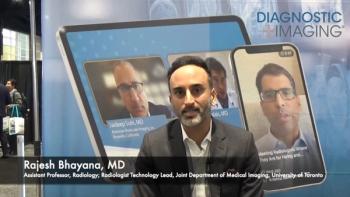
iPads Impact Resident Learning, Not Clinical Workflow
iPads are helping radiology residents learn by providing access to online journals and texts, but they still have not become essential work tools.
Radiology residents who used iPads found them valuable for learning, but their usefulness in their clinical workflow was less pronounced, showed results of a study published in the
Researchers from Beth Israel Deaconess Medical Center in Boston, Mass., assessed the usage patterns of 38 radiology residents and their opinions of the iPad as a tool for both radiology education and clinical practice.
The residents, ranging from second to fifth year, were provided with iPad 2 tablets for six months, along with subscriptions to e-Anatomy and STATdx. The residents were then asked to complete a survey regarding their opinions of the iPad’s usefulness as a learning and working tool.
Thirty-six residents completed the survey. Eighty-six percent reported that they used their iPad daily and 88 percent said they used radiology-specific applications, particularly e-Anatomy, daily or weekly. While 70 percent preferred to read journal articles on the iPad, only 48.5 percent preferred to read textbooks in this manner.
When asked about the clinical usefulness of the iPad, the residents were divided. Most, 75 percent, had not used the iPad to review radiologic examinations and only 47 percent had used the iPad during readout. Only 12 percent used the iPad to edit dictated reports.
“Some sectors of the medical community consider the iPad to be a revolutionary tool in healthcare delivery,” co-author Justin W. Kung, MD, said in a release. “The impact of the iPad on the daily duties of radiology residents in our study was limited, but residents at our institution have adopted the iPad to view electronic journals and use radiology-specific applications. The full impact of this device on resident education will depend on the development of applications that harness the unique ability of his medium for training the next generation of radiologists.”
Newsletter
Stay at the forefront of radiology with the Diagnostic Imaging newsletter, delivering the latest news, clinical insights, and imaging advancements for today’s radiologists.




























